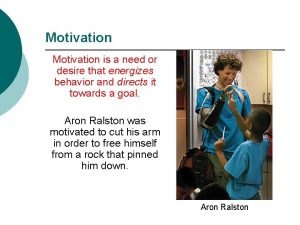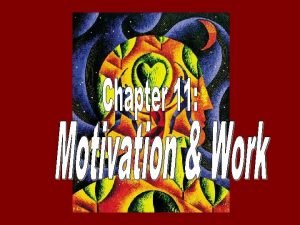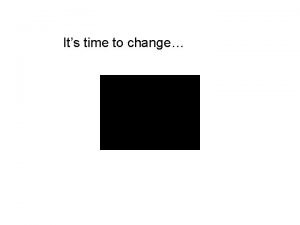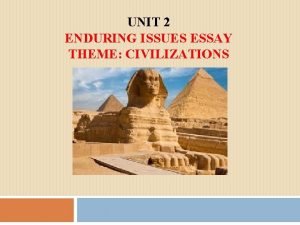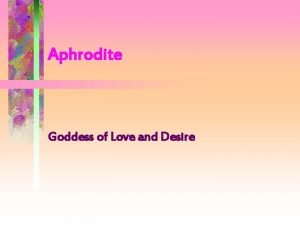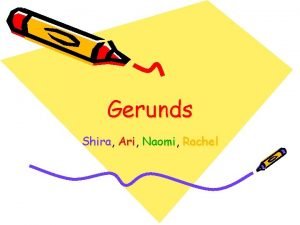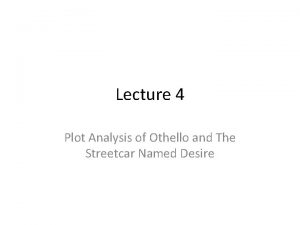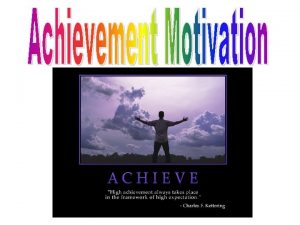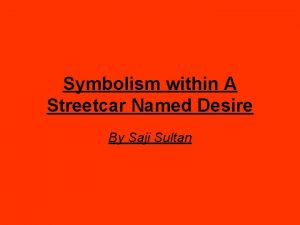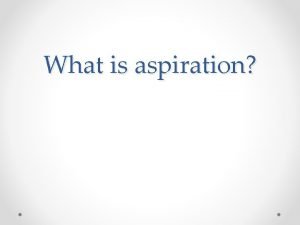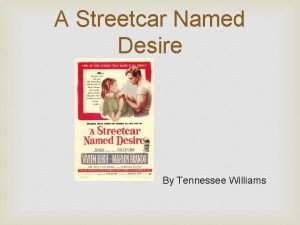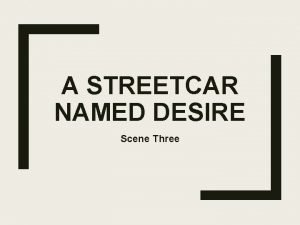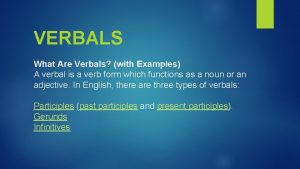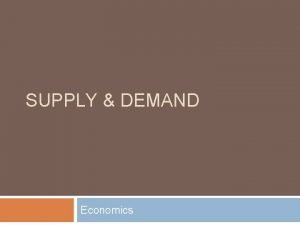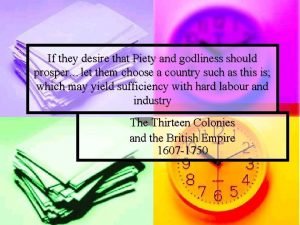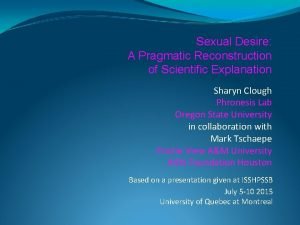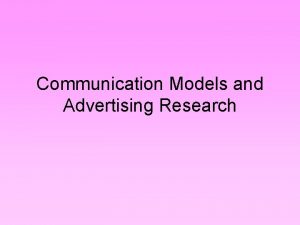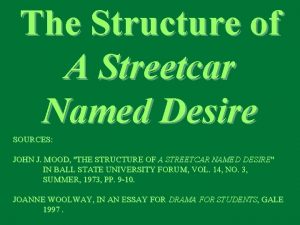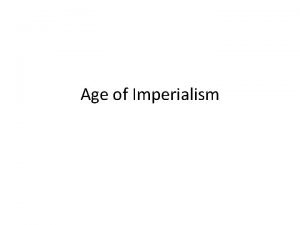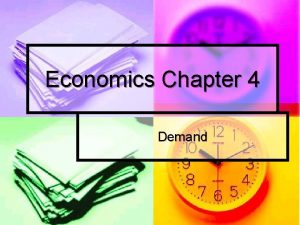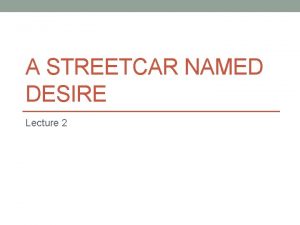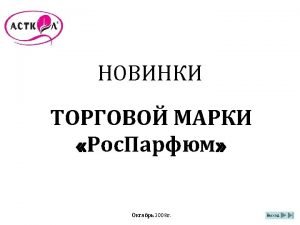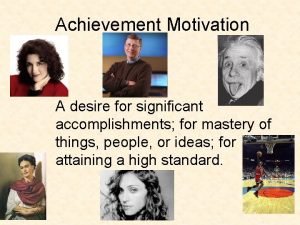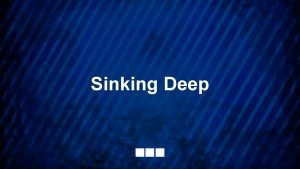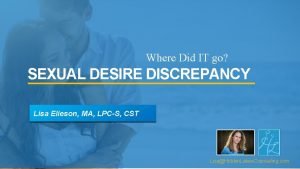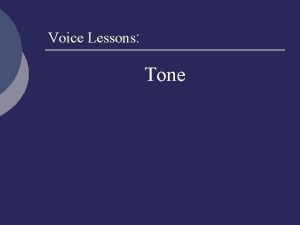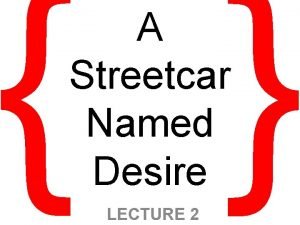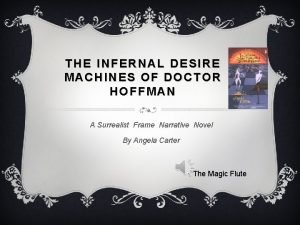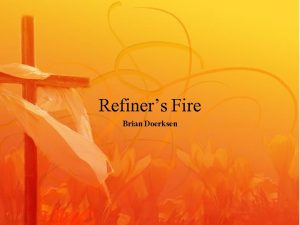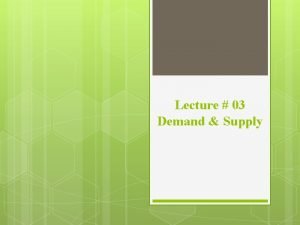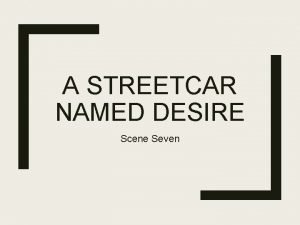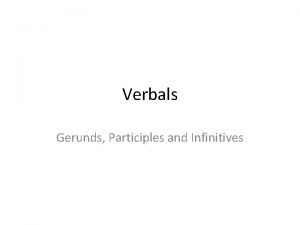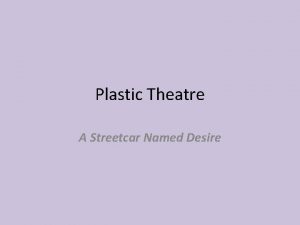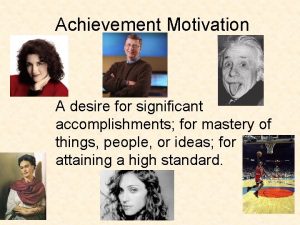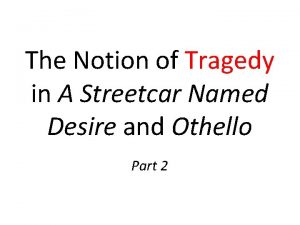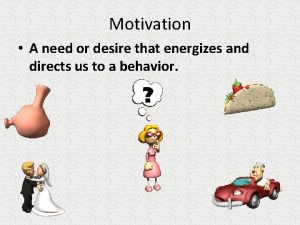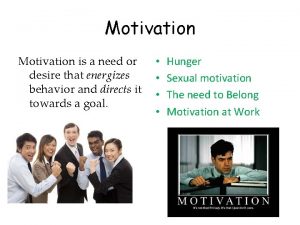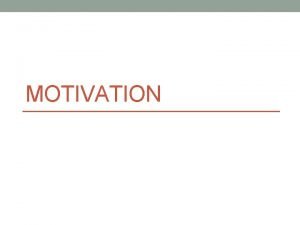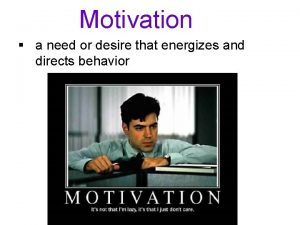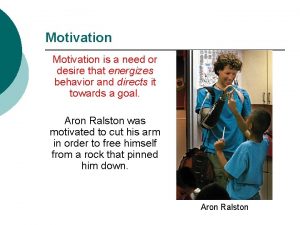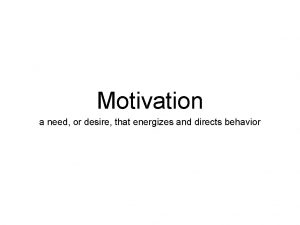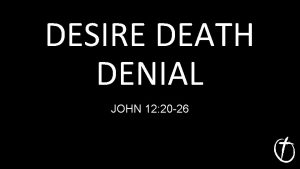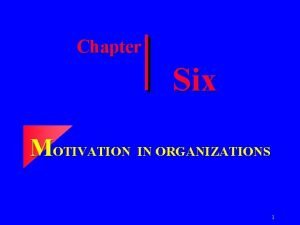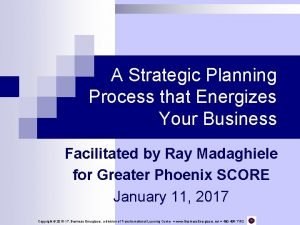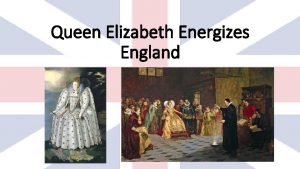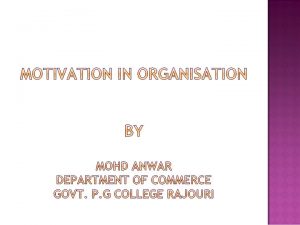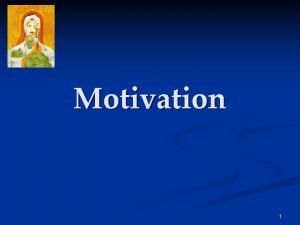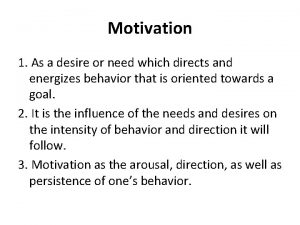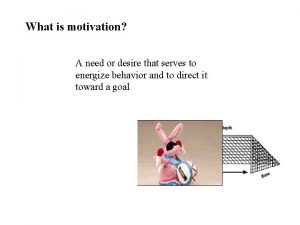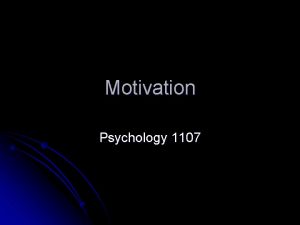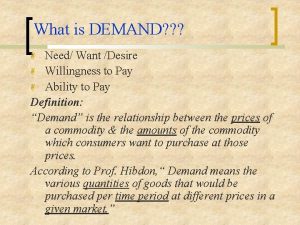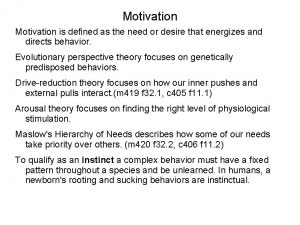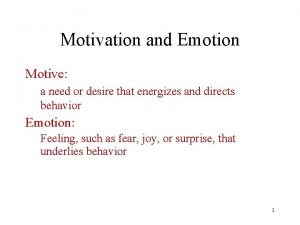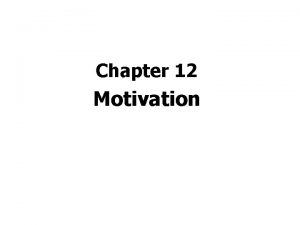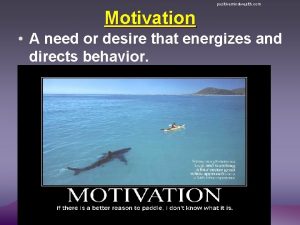What is a need or desire that energizes

























































- Slides: 57


What is ______? a need or desire that energizes and directs behavior

From which perspectives have psychologists viewed motivation? _______ theory _________ of _____

What is an _____? a complex behavior that is rigidly patterned throughout a species and is unlearned

What is _______theory? To qualify as an instinct, a complex behavior must have a fixed pattern throughout a species and be unlearned. Instinct theory views our instincts as the source of our motivations. Instinct theory states that the motivation to survive is the most important motivation and the innate behaviors that aid survival drive our motivations…this sounds quite a lot like evolutionary theory.

How do physiological needs create a ____? Physiological needs (such as for food or water) create an aroused, motivated state— a drive (such as hunger or thirst)—that pushes us to behave in a way that reduces the need and returns the body to __________.

What is___________theory? the idea that a physiological need creates an aroused state (a drive) that motivates an organism to satisfy the need and restore the body to homeostasis, or balance

How is behavior pulled by _______? Not only are we pushed by our need to reduce physiological drives, we also are pulled by incentives — positive or negative environmental stimuli that lure or repel us.

What is the __________ law? Two early twentieth-century psychologists studied the relationship of arousal to performance and identified the Yerkes-Dodson law: moderate arousal leads to optimal performance. (Yerkes & Dodson, 1908)

What is Abraham’s ______’s theory of motivation? Abraham Maslow theorized that human needs are hierarchical…. some have priority over others. Abraham _____ 1908 -1970

What is a _____ of _____? Maslow’s hierarchy of needs begins at the base with physiological needs that must first be satisfied before higher level safety needs and then psychological needs are addressed.

Two portions of the hypothalamus that control appetite. ______ hypothalamus (LH) Stimulation of this structure in the hypothalamus stimulates hunger. Lesioning (surgically removing) inhibits hunger signals. ________ hypothalamus (VMH) Stimulation of this structure in the hypothalamus inhibits hunger. Lesioning inhibits satiety(full) signals.

What are five appetite hormones? _________: decreases appetite _____: increases appetite

What is the ________? the point (weight) at which your “weight thermostat” may be set (fixed) When your body falls below this weight, increased hunger and a lowered metabolic rate may combine to restore lost weight.

What are the two sex hormones? ________ Both males and females have testosterone, but the additional testosterone in males stimulates the growth of the male sex organs during the fetal period and the development of the male sex characteristics during puberty. _______ Estrogen is a sex hormone that contribute to female sex characteristics and is secreted in greater amounts by females than by males. Estrogen levels peak during ovulation.

What is the sexual response cycle? the four stages of sexual responding described by William _____ and Virginia _____ in 1966 Phase One: ____ Phase Two: _____ Phase Three: _____ Phase Four: _____

What is _______ motivation? a desire for significant accomplishment, for mastery of skills or ideas, for control, and for attaining a high standard

What is _____? a response of the whole organism, involving physiological arousal, expressive behaviors, and conscious experience

What is the _______ theory of emotion? theory that our experience of emotion is our awareness of our physiological responses to an emotion-arousing stimulus: stimulus leads to arousal which leads to emotion “We feel sorry because we cry, angry because we strike, afraid because we tremble. ” (William James, 1890, p. 1066)

How did Walter Cannon disagree with the James-Lange theory of emotion? Harvard physiologist Walter Cannon and his graduate student Philip Bard disagreed with the James-Lange theory. They asked: “Does a racing heart signal fear or anger or love? ” The body’s responses—heart rate, perspiration, and body temperature—are too similar, and they change too slowly, to ____ the different emotions.

What is the ______ thalamic theory of emotion? theory that an emotion-arousing stimulus simultaneously triggers (1) physiological responses and (2) the subjective experience of emotion

How do the two theories differ? ______ theory Physiological responses occur first and are the cause of emotions. The emotional and the physical response occur simultaneously - one is not dependent upon the other.

How do thinking and feeling interact? The James-Lange theory and the Cannon-Bard theory both take into account physiological responses and the interplay with emotion. But how does ____ factor in to theory of emotion? Stanley _____ and Jerome ____ demonstrated that how we appraise (interpret) our experiences also matters.

What is the Schachter-Singer ________ theory of emotion? Our physical reactions and our thoughts (perceptions, memories, and interpretations) together create emotion. In Schachter and Singer’s _________, emotions have two ingredients: physical arousal and cognitive appraisal. An emotional experience, they argued, requires a conscious interpretation of arousal.

So, does _______ matter? This discovery—that a stirred-up state can be experienced as one emotion or another, depending on how we interpret and label it—has been replicated in dozens of experiments and continues to influence modern emotion research. (Mac. Cormack & Lindquist, 2016; Reisenzein, 1983; Sinclair et al. , 1994)

Does _____ have to precede emotion? Must we always interpret our arousal before we can experience an emotion? Psychologist Robert _______ didn’t think so. He contended that we actually have many emotional reactions apart from, or even before, our conscious interpretation of a situation.

How do the Schachter-Singer and Zajonc. Le. Doux theories of emotion compare? _________ Our appraisal and labeling of events also determine our emotional responses. ________ Some emotional responses are immediate, before any conscious appraisal.

What did ______ conclude? The appraisal may be effortless and we may not be conscious of it, but it is still a mental function. To know whether a stimulus is good or bad, the brain must have some idea of what it is. (Storbeck et al. , 2006) Lazarus proposed that emotions arise when we appraise an event as harmless or dangerous. For instance, we appraise the sound of the rustling bushes as the presence of a threat. Later, we realize that it was “just the wind. ”

How effective are _____ in using body states to detect lies? Polygraphs measure emotion-linked autonomic arousal, as reflected in changed breathing, heart rate, and perspiration. Can these results be used to detect lies?

What is a _____smile? Raised cheeks and activated muscles under the eyes suggest a natural smile, called a Duchenne smile. (in honor of the French physician who described it).

Do facial expressions have different meanings in different cultures? Two investigative teams showed photographs of various facial expressions to people in different parts of the world and asked them to guess the emotion. (__________1994, 2016; Izard, 1977, 1994)

Do all cultures express the same degree of emotion? Compared with their counterparts in China, where calmness is emphasized, European-American leaders follow different ______—they express excited smiles six times more frequently in their official photos. (Tsai et al. , 2006, 2016)

What were the results of this research? Kazuo Mori and Hideko Mori’s results confirmed the _____________effect; the tendency of facial muscle states to trigger corresponding feelings such as fear, anger, or happiness. Most students reported feeling more happy than sad when their cheeks were raised upward. Most students reported feeling more sad than happy when their cheeks were pulled downward

What is the ______ feedback effect? the tendency of behavior to influence our own and others’ thoughts, feelings, and actions For instance, walk for a few minutes with short, shuffling steps, keeping your eyes downcast. Now walk around taking long strides, with your arms swinging and your eyes looking straight ahead. Can you feel your mood shift? Going through the motions awakens the emotions.

What is _____? the process by which we perceive and respond to certain events, called stressors, that we appraise as threatening or challenging

How are a stressor and a stress reaction related to stress? What is a ____? What is a stress reaction? What is _______? To a psychologist, the terrifying truck ride that Ben took was a stressor. Ben’s physical and emotional responses were a stress reaction. And the process by which Ben related to the threat was stress.

What are three main categories of stress? 1 _________ 2 ______changes 3 _____ hassles

How do we respond adapt to stress? When alerted by any of a number of brain pathways, the sympathetic nervous system arouses us, preparing the body for the adaptive response Walter Cannon called _______. It increases heart rate and respiration, diverts blood from digestion to the skeletal muscles, dulls feelings of pain, and releases sugar and fat from the body’s stores.

How do the adrenal glands work to affect stress responses? Physiologists have identified an additional stress response system. On orders from the cerebral cortex (via the hypothalamus and pituitary gland), the outer part of the adrenal glands secretes glucocorticoid stress hormones such as cortisol.

What is the _________(GAS)? Canadian scientist Hans Selye’s 40 years of research on stress extended Cannon’s findings. His studies of animals’ reactions to various stressors, such as electric shock and surgery, helped make stress a major concept in both psychology and medicine. Selye proposed that the body’s adaptive response to stress is so general that, like a single burglar alarm, it sounds, no matter what intrudes. He named this response the general adaptation syndrome (GAS).

What are three stages of the general adaptation syndrome (GAS)? ________saw the general adaptation syndrome as a three-phase process of alarm, resistance and exhaustion.

What is _____? In Phase 1, an alarm reaction, occurs as the sympathetic nervous system is suddenly activated. The heart rate zooms and blood is diverted to the skeletal muscles. Feelings of faintness of shock may occur. Resources are mobilized, and fight/flight or freeze is activated.

What is resistance? During Phase 2, resistance, temperature, blood pressure, and respiration remain high. The adrenal glands pump hormones into the bloodstream. All resources are summoned to meet the challenge. As time passes, with no relief from stress, the body’s reserves begin to dwindle.

What is exhaustion? Phase 3, exhaustion With exhaustion, the body becomes more vulnerable to illness or even, in extreme cases, collapse and death.

What is the tend-and-befriend response? Another, found often among women, is to give and receive support—what’s called the tend-and -befriend response. (Lim & De. Steno, 2016; Taylor, 2006; Taylor et al. , 2000) Facing stress, men more often than women tend to withdraw socially, turn to alcohol, or become emotionally insensitive. (Bodenmann et al. , 2015) Women more often respond to stress by nurturing and banding together.

What are health psychology and psychoneuroimmunology? health psychology psychoneuroimmunology a subfield of psychology that provides psychology’s contribution to behavioral medicine the study of how psychological, neural, and endocrine processes together affect the immune system and resulting health

the _____ response Four types of cells are active in searching for and destroying invaders in the body; B and T lymphocytes, macrophages and natural killer cells.

What follow up research was conducted by Freidman and Rosenman? Friedman and Rosenman launched a longitudinal study of more than 3000 healthy men, aged 35 to 59. The researchers interviewed each man for 15 minutes, noting his work and eating habits, manner of talking, and other behavior patterns. After the interviews, the subjects were classified as having either Type A or Type B personalities.

What characterizes a Type ____ personality? The subjects in Friedman and Rosenman’s study who seemed the most reactive, competitive, harddriving, impatient, timeconscious, super-motivated, verbally aggressive, and easily angered they called Type A.

What characterizes a Type _____ personality? The roughly equal number of men in Friedman and Rosenman’s study who were more easygoing and relaxed they called Type B.

What were the findings of the longitudinal study? Nine years later, 257 men had suffered heart attacks, and 69 percent of them were Type A. Moreover, not one of the “pure” Type B’s—the most mellow and laid-back of their group—had suffered a heart attack.

What are ways to defuse anger? ______ Reduce the level of physiological arousal of anger by waiting. “What goes up must come down. ” (C. Tavris, 1982) find a healthy distraction or support Calm yourself by exercising, playing an instrument, or talking it through with a friend. ____you rself Try to move away from the situation mentally, as if you are watching it unfold from a distance

Does stress cause illness? Stress may not directly cause illness, but it does make us more vulnerable, by influencing our behaviors and our physiology.

What is _____ psychology? Martin Seligman (1942 - ) Psychologist Martin Seligman proposed the scientific study of human flourishing, with the goals of discovering and promoting strengths and virtues that help individuals and communities to thrive.

What is _____ psychology’s first pillar? Taken together, satisfaction with the past, happiness with the present, and optimism about the future define the positive psychology movement’s first pillar: positive well-being. Seligman views happiness as a by-product of a pleasant, engaged, and meaningful life.

What is _____psychology’s second pillar? Positive psychology is about building not just a pleasant life, says Seligman, but also a good life that engages one’s skills, and a meaningful life that points beyond oneself. Thus, the second pillar, positive character, focuses on exploring and enhancing creativity, courage, compassion, integrity, self-control, leadership, wisdom, and spirituality.

What is positive psychology’s third pillar? The third pillar, positive groups, communities, and cultures, seeks to foster a positive social ecology. This includes healthy families, communal neighborhoods, effective schools, socially responsible media, and civil dialogue.
 What do we call a need or desire that energizes behavior
What do we call a need or desire that energizes behavior Refractory period men
Refractory period men Elizabeth energizes england
Elizabeth energizes england Is the individual internal process that energizes directs
Is the individual internal process that energizes directs Desire ability reason need
Desire ability reason need Sau thất bại ở hồ điển triệt
Sau thất bại ở hồ điển triệt Thơ thất ngôn tứ tuyệt đường luật
Thơ thất ngôn tứ tuyệt đường luật Hãy nói thật ít để làm được nhiều
Hãy nói thật ít để làm được nhiều Thơ thất ngôn tứ tuyệt đường luật
Thơ thất ngôn tứ tuyệt đường luật Tôn thất thuyết là ai
Tôn thất thuyết là ai Phân độ lown
Phân độ lown Chiến lược kinh doanh quốc tế của walmart
Chiến lược kinh doanh quốc tế của walmart Gây tê cơ vuông thắt lưng
Gây tê cơ vuông thắt lưng Block nhĩ thất độ 2 type 1
Block nhĩ thất độ 2 type 1 Tìm độ lớn thật của tam giác abc
Tìm độ lớn thật của tam giác abc Enduring issues essay introduction
Enduring issues essay introduction Strengths of articles of confederation
Strengths of articles of confederation Egg
Egg Traveling might satisfy your desire for new experiences.
Traveling might satisfy your desire for new experiences. A streetcar named desire scene 1
A streetcar named desire scene 1 Othello plot structure
Othello plot structure A desire for significant accomplishment
A desire for significant accomplishment Neil thisse is a loyalist who fled the colonies
Neil thisse is a loyalist who fled the colonies Streetcar named desire symbols
Streetcar named desire symbols Eagerly desire spiritual gifts
Eagerly desire spiritual gifts Longing, strong desire
Longing, strong desire Old south vs new south streetcar named desire
Old south vs new south streetcar named desire A streetcar named desire vocabulary
A streetcar named desire vocabulary Acadia - burned with desire
Acadia - burned with desire Supply analysis
Supply analysis Plastic theatre in a streetcar named desire scene 3
Plastic theatre in a streetcar named desire scene 3 Examples of verbals
Examples of verbals Desire and demand
Desire and demand If they desire that piety and godliness
If they desire that piety and godliness Sari van anders
Sari van anders Communication models
Communication models Structure of streetcar named desire
Structure of streetcar named desire Why did western nations desire lands in the pacific rim
Why did western nations desire lands in the pacific rim Demand is the desire,
Demand is the desire, Streetcar named desire theme
Streetcar named desire theme Northampton community college
Northampton community college They do not appreciate my singing
They do not appreciate my singing Desire for high achievement
Desire for high achievement Standing here in your presence in a grace so relentless
Standing here in your presence in a grace so relentless Scene ten
Scene ten Bassons model
Bassons model Voice lessons tone answers
Voice lessons tone answers A streetcar named desire setting
A streetcar named desire setting The infernal desire machines of doctor hoffman
The infernal desire machines of doctor hoffman I choose to be holy set apart
I choose to be holy set apart Desire and demand
Desire and demand A streetcar named desire scene 7
A streetcar named desire scene 7 Infinitive as indirect object
Infinitive as indirect object Brethren my heart's desire and prayer
Brethren my heart's desire and prayer Examples of plastic theatre in a streetcar named desire
Examples of plastic theatre in a streetcar named desire A desire for significant accomplishment
A desire for significant accomplishment 1 corinthians 12 1-14
1 corinthians 12 1-14 Varsouviana pronunciation
Varsouviana pronunciation
